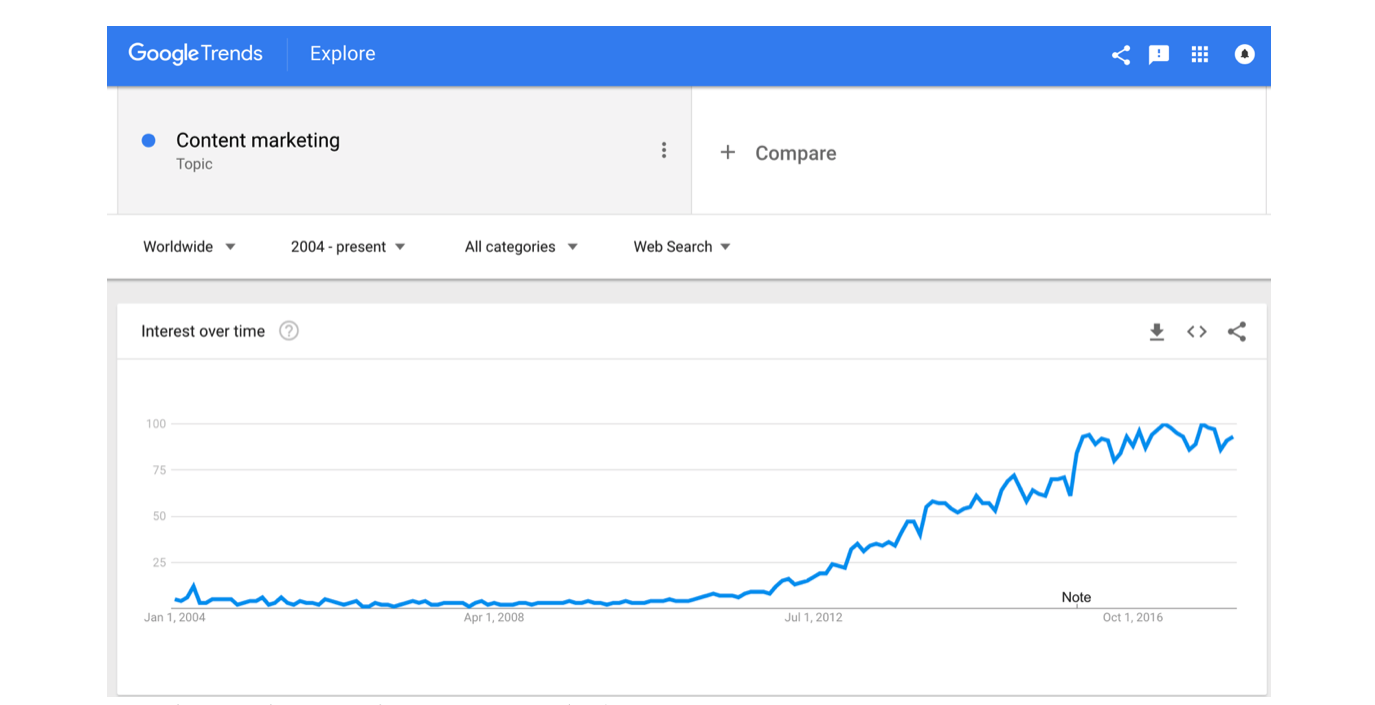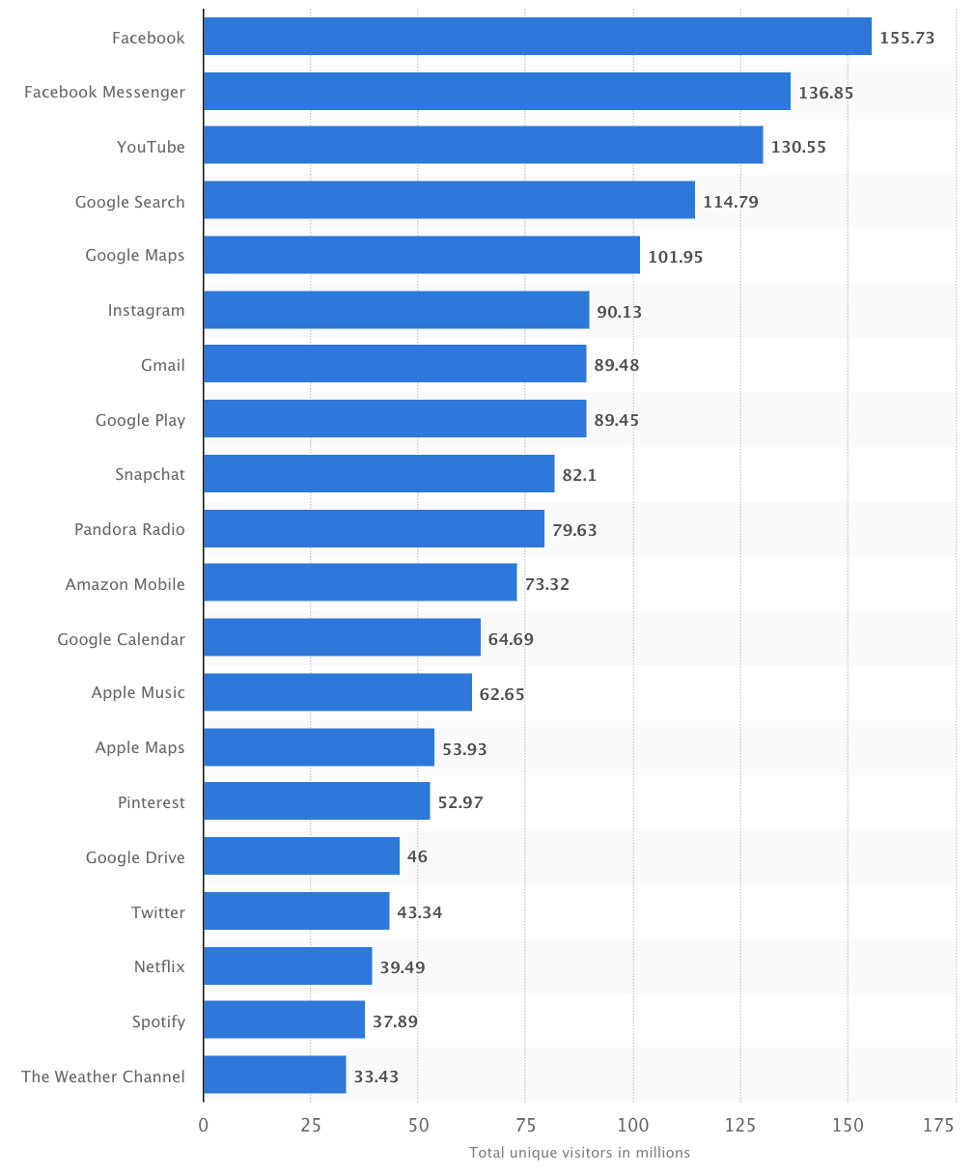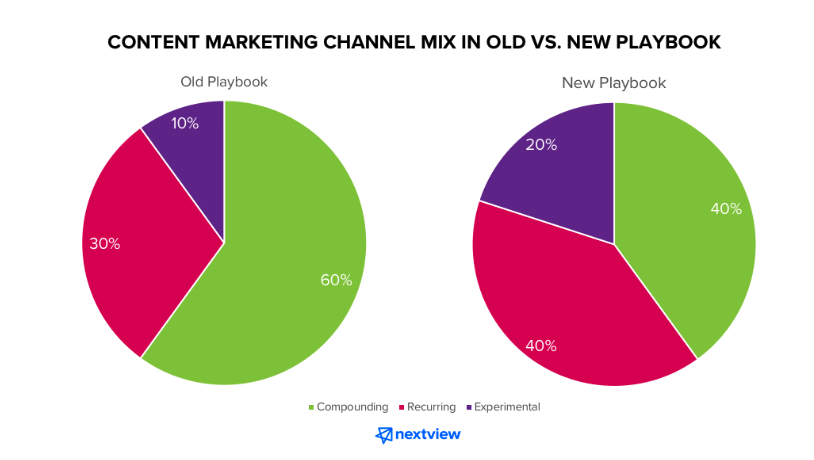


The Old Content Marketing Playbook Doesn’t Work Anymore

It happened to billboards. TV spots. Direct mail. Banner ads.
Now, it’s happening to content marketing.
At one point in time, each was the customer acquisition channel du jour — now, it’s oversaturated, expensive, and increasingly ineffective.
Lots of ink has already been spilled about content marketing’s decline. Erica Berger wrote a seminal piece on “peak content” back in 2015, but many other journalists and marketers have studied this trend or felt its effects first-hand — myself included.
Despite the warnings, I didn’t realize how quickly the tide would turn.
I spent four of the last five years building HubSpot’s content strategy. In my time there, we grew the blog by millions, scaled new channels like the podcast and Medium publication, and consistently re-evaluated and experimented with our core strategy. We had our eyes on the horizon, but our core assumptions weren’t changing anytime soon.
Today, things have changed. In my job at NextView, I spend a significant amount of time doing content marketing for the firm and talking about content marketing with founders and senior marketers.
And it amazes me how many of us are still following the same, broken playbook.
Content marketing looks vastly different than it did even a year ago, but many people think it’s still this holy grail, high-leverage acquisition strategy.
With some brute force, they too can write a bunch of blog posts and tweets, amass lots of inbound links, rank for keywords in Google, and gain customers cheaper and faster than competitors and incumbents. (For the record, I’ve been guilty of this mindset, too.)
But this type of content marketing strategy doesn’t work anymore. Technology, media, and human behavior are different than even five years ago. And as a result, the strategies startups use to acquire new customers has to change, too.
Why Is Content Marketing So Hard Now?
In the span of 10 years, content marketing has gone from a relatively under-the-radar acquisition strategy to something ubiquitous and competitive, even for big brands.

What’s changed?
Content production has skyrocketed.
Study after study shows that brands are publishing more and more content each year, but it’s becoming less and less effective from both a top-of-the-funnel engagement and bottom-of-the funnel sales perspective.
A 2016 study from Trackmaven showed that in one year, content output increased 35% but average engagement actually decreased by 17%. And a recent study ProfitWell shows that the CAC of content marketing is increasing at a faster rate than the CAC of paid customer acquisition.
While that could be attributed to just the increase in publishing volume and competition from other brands, that’s not the only thing happening.
There are fewer content channels with higher barriers to broad reach.
Compared to 10 years ago, the top websites and distribution channels are controlled by a smaller number of ginormous companies. Though consumers are spending more and more time online each year, it’s mostly on mobile — specifically on apps owned by two of the biggest tech companies in the world: Facebook and Google.

Source: Statista
It’s no longer Facebook versus Twitter versus Google versus LinkedIn versus some new upstart. Today it’s Facebook + Messenger + WhatsApp + Instagram versus Google Search + YouTube + Google Maps + Gmail + etc versus other giant conglomerates. Even “smaller” competitors like Snapchat are struggling to defend their corner of the market from the blatant product ripoffs and ever-expanding scope of these huge tech companies.
As competition heats up between the tech giants, they’re fighting like hell to keep users on these platforms.
Think back to the changes Facebook has made in the last few years — declining brand organic reach, boosting native videos and Facebook Live, introducing features like Marketplace and Stories, and most recently, pivoting back to surfacing News Feed content from friends and family. While what content they reward changes, the goal is always the same: They want users to spend more and more time on their platform so they can have more chances to deliver ad inventory.
Same thing goes for Google. Featured snippets and quick answers skim traffic from top results, but they also make sure users don’t wander too far from their platform.
These trends leave growing companies with few options: Play by the new rules, pay up, or rethink your content marketing altogether.
Advice for Startups Considering Content Marketing
With these new shifts in human behavior, technology, and media, founders and marketers need to rethink how they use content marketing in their acquisition strategies. While I wouldn’t recommend completely abandoning content marketing — buyers still want to self-educate prior to purchasing something from you — I do think you should reevaluate the role it should play in your business.
This is the point in the piece where I bring out the disclaimers. Some industries may find certain pieces of the following advice more applicable than others. And some of the following advice is flat-out wrong for certain business models and customers types.
Which leads me to my first point…
Find the gap between what your customers want and what your competition is providing.
This advice isn’t particularly novel, but it’s now even more important given the channel constraints and existing competition for budding startups.
You are already doing this when scoping out the market opportunity and product roadmap for your company — now, you just need to apply the same lens to the acquisition strategy.
To figure out what “content gap” you’d be filling for your customers, ask yourself questions like:
- Is your industry historically opaque?
- Do customers want to educate themselves about your product / industry before buying?
- Do competitors communicate with customers in ways they don’t prefer?
- How important would your brand be to your customers’ learning, entertainment, and/or self-identity?
There is no right answer to any of these — and as you grow, you may find that your initial hypothesis and actual results will vary. But your responses will help you better identify potential “content gaps” in the market of which you can take advantage. (Or, rule out whether content would give you a competitive advantage at all.)
Stop thinking content is just blogging.
Or videos. Or tweets. Or podcasting. Or videos. Or LinkedIn broems. Or ebooks. Or data reports. Or free tools.
These are specific tactics and channels you can use to reach your audience.
There is no specific tool you have to use to do content marketing.
You are in the business of filling that “content gap,” which may mean only some of these tactics are applicable. Or maybe there’s something else entirely you should try.
Get over “owning” all your content.
For the last decade, people have obsessed about the power of “owning” their marketing.
Have a new feature or idea or initiative? Back then, you’d publish a blog post about it on your website, then use all of your other social platforms and outreach strategy to direct people to that one link. This way, you control the message and delivery. And, you reap those sweet sweet inbound links when others talk about your new thing, which pushed you further up in the Google rankings.
But now, with channel competition and consolidation, this strategy isn’t just ineffective — it’s short-sighted. These “off-site” channels shouldn’t just be a way to direct traffic to pages on your website. These channels are rewarding original content creators with more prominent and frequent feed placements. If you continue down the path of just pushing links to your website, you won’t get the reach you are hoping to have with the channel.
This is actually a very huge opportunity for startups. Instead of having to route your audience entirely through your website, you can create content that exists natively within the platform.
Yes, this means your content is at the whim of the algorithms — which we all know can change on a dime. But you are playing that game anyway if you are designing your acquisition strategy around Google or other search engines, app stores, press hits, forums, or literally any other external source.
The only truly non-circuitous way to your audience is when they come directly to your website — and that’s a nearly impossible solution when you’re not already top-of-mind with your customers.
Remember that your audience is your audience, regardless of where they are. What changes with different channels is how actively users seek out and participate in your message (e.g. scrolling by your video in Facebook’s feed vs. searching for more industry information and landing on your website), how you repackage your core message to each channel, and the technology-specific tactics you need to use to reach users in more passive channels.
Re-calibrate your strategy between compounding, recurring, and experimental content channels.
One of the biggest benefits of having a content strategy rooted in search engines is that it brings compounding returns over time. I saw this first-hand at HubSpot —roughly 80% of the traffic to our blog in a given month was from posts we did not publish that month, and the percentage for lead gen was even higher. There’s a huge advantage to having evergreen content drive predictable results for you long after you ship it.
When you can’t be as reliant on channels with compounding returns (namely search), you have find scale in other ways.
The first way I recommend is to build out strategies on recurring content channels. These are things like email newsletters, podcasts, Facebook groups, Instagram followers — any network or technology where people can opt into hearing from you regularly (and the network’s algorithm or technology helps facilitate that happening). Unlike compounding channels, these require more consistent efforts to get results — if you don’t send a newsletter at a set cadence, for example, your audience doesn’t interact with your newsletter — but they give you more consistent growth than non-recurring channels (e.g. Twitter and other chronological social feeds).
You also should be building in time for experimenting with new content channels and acquisition strategies within existing channels. I know that this seems like a no-brainer, but it’s incredibly easy to forget this practice when you’re trying to get traction on channels.
Content marketing — even today — requires you to put in reps to see results. It’s easy to think growth is right around the corner if you just keep publishing at a certain volume.
Experimenting is your hedge against your core strategy going up in flames (especially if there are new algorithm changes) or your core acquisition strategy just not delivering the results you hoped.
How you reallocate your time among these three types of channels will differ from business to business, but here’s what recalibrating your strategy might look like:

Use content to go deep instead of wide.
Content marketing has long been about helping brands build a wide audience. While I still think there’s lots of opportunity for brands to continue to do so (albeit in different ways through new channels), some people are finding success by using content to get deeper with their target audience.
This is especially important if you’re marketing to a set number of target accounts. In an recent interview, Joe Chernov, CMO of InsightSquared (a NextView Portfolio company), describes the difference well:
“With [account-based marketing], you still need content, but that content needs to be calibrated for lower in the funnel. Or at least written in such a way that the goal isn’t to attract a massive audience from which you’re going to have to use software to filter the good [leads] from the bad…and instead focus on content that brings in a smaller audience, but the right audience. It’s a different way to think about content.”
Jay Acunzo, my Platform predecessor at NextView, also is a big advocate for this approach. It’s one he employed while leading and growing our podcast, Traction. When Jay started the show, he didn’t care about amassing the largest audience of entrepreneurs — he wanted the stories to resonate deeply with a smaller number of highly engaged listeners. This strategy helped land the show in coveted lists of top podcasts for entrepreneurs (and brought even more new, qualified listeners to the show).
Going deep can be very beneficial in certain business models. In B2B, content can work wonders for companies with long sales cycles, products that require a high degree of trust to purchase, or an ABM approach. And in B2C, this can work well if you rely heavily on brand ambassadors or resellers. For these types of businesses, deep content marketing can be a huge differentiator.
Everything Changes
Marketing has changed before, and it’s going to continue to change. That change creates opportunities — not just for big brands to get even bigger, but for startups looking for any edge to gain traction in their market.
That change is exciting … but it also can leave you with a bit of whiplash if you’re waiting around for a problem to get big enough before you pay attention to it. (This can be especially problematic for young startups who are time- and attention-strained to begin with.)
Here are a few ways to guard against the marketing whiplash:
- Look to the past. My colleague Lee Howeroften reminds us that history doesn’t repeat — it rhymes. This is especially true for marketing. Channels emerge, gain popularity in the market, get saturated, fade out of popularity … and then start the cycle all over again. Today, startups are finding success experimenting with “old school” go-to-market strategies like retail stores, print magazines, and subway ads. So if you’re on the hunt for new, low saturated channels, try looking backwards. Read classic marketing books to better understand the fundamentals and uncover new ideas — this list from my friend Dave Gerhardt at Drift (also a NextView portfolio company) is a fantastic place to start.
- Watch what new media companies are doing, too. Acquiring attention and new audiences is baked into media companies’ DNA — and the emerging media companies have to get extra creative to survive in such a competitive business. Sure, they may not get it right all the time, but their business requires them to be bolder with experimenting and scaling than many other types of startups. Some of my favorites include The Outline(another NextView portfolio co.), Axios, Vox, and Gimlet.
Content marketing certainly isn’t dead, but it’s matured and changed pretty drastically compared to five years ago. And who knows what it’ll look like even a year from now. Depending on how technology, media, and human behavior change, how we think about marketing as a whole could be vastly different. I can’t wait to see how it unfolds — and how early startups take advantage of what’s next.
How are you experiencing these technological and behavioral trends? I’d love to hear how your acquisition strategies have changed as a result.





